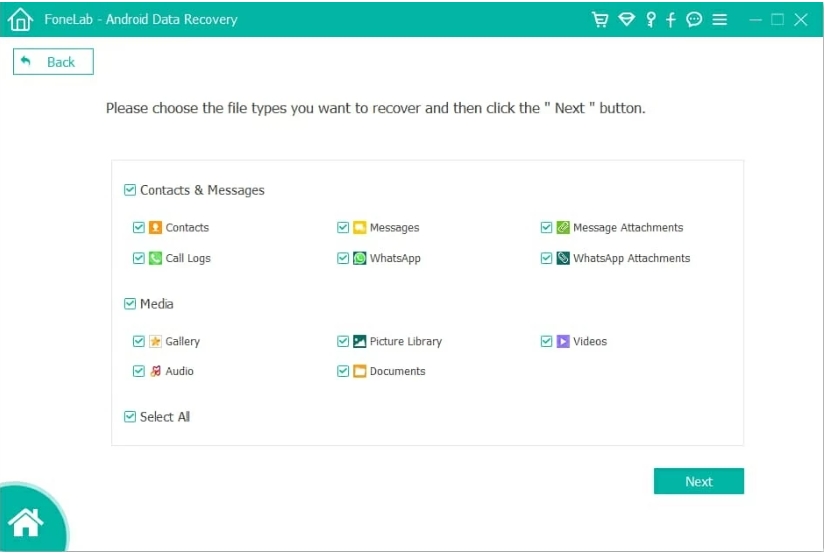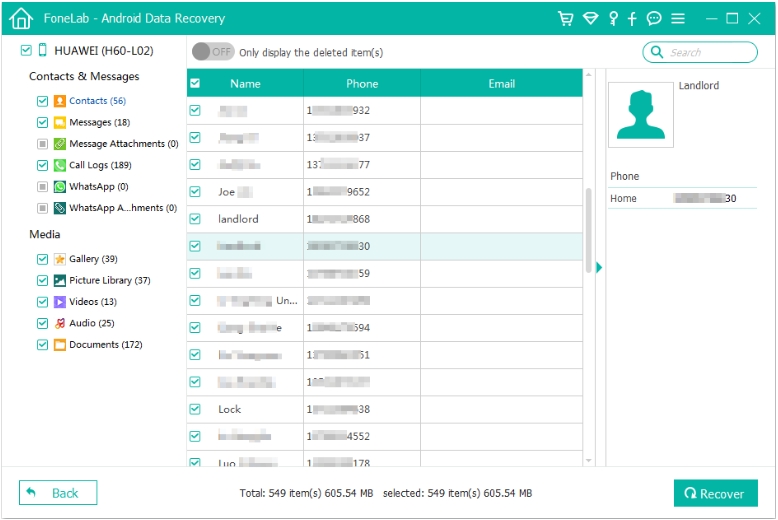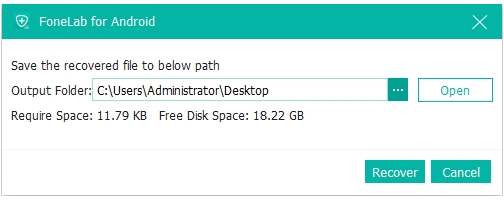SD Card Data Recovery for Samsung|Recover Messages/Contacts/Call history
Accidentally deleted files or formatted your SD card on a Samsung Galaxy? Here’s how to safely and effectively recover Samsunng text messages/contacts/call history with expert-approved solutions and detailed steps.
When Your Samsung SD Card Fails You
There’s nothing quite as frustrating as losing precious memories or work files from your Samsung Galaxy’s SD card. Maybe your photos vanished after a software update, your videos disappeared following a formatting error, or the SD card suddenly became unreadable. Whatever the cause, the pain of lost data is universal.
Samsung phones, including the Galaxy S series, Note, A, and Z Fold models, all support expandable storage through microSD cards — a convenient but sometimes fragile solution. The SD card can become corrupted, accidentally formatted, or even physically damaged. Fortunately, data loss isn’t always permanent. With the right tools and techniques, you can often retrieve lost data — even from seemingly inaccessible SD cards.
In this guide, we’ll break down practical methods to recover SD card data from your Samsung Galaxy. We’ll start with quick built-in fixes, move on to professional-grade recovery options, and end with proven preventive tips to protect your files for good.
Guide List
- Common Causes of SD Card Data Loss on Samsung Galaxy
- Method 1: Recover Samsung SD Card Data Using iDatapp Android Data Recovery
- Method 2: Recover SD Card Files via Samsung My Files App
- Method 3: Use a Computer to Scan and Recover the SD Card
- Method 4: Recover SD Card Photos Using Google Photos Backup
- Method 5: Use the Android Debug Bridge (ADB) for Advanced Users
- Extra Tips: Prevent SD Card Data Loss on Samsung Galaxy
- Frequently Asked Questions
Common Causes of SD Card Data Loss on Samsung Galaxy
Before jumping into recovery, it’s important to understand what causes SD card data loss. Recognizing the source helps you choose the right recovery method and avoid making things worse.
- Accidental deletion – You removed photos or videos thinking they were backed up.
- Formatting errors – The system asked to format your SD card, and you clicked “Yes” too quickly.
- Corrupted file system – A sudden ejection or malware infection damaged card data.
- Android OS glitches – Updates or system crashes temporarily hide or erase files.
- Physical damage – Water exposure or wear over time made your SD card unreadable.
Once you identify the reason, recovery becomes a lot easier.
Method 1: Recover Samsung SD Card Data Using iDatapp Android Data Recovery
When files are missing or your SD card becomes unreadable, manual fixes might not be enough. That’s when professional data recovery software comes into play — and iDatapp Android Data Recovery is purpose-built for such cases.
This tool supports deep SD card scanning and can recover deleted photos, videos, messages, audio files, and even app data directly from your Samsung device or an external SD card.

- Supports all Samsung Galaxy models (S26/S25/24/S23/S22, Note series, A series, etc.)
- Restores files from corrupted, formatted, or inaccessible SD cards
- Offers preview before recovery, ensuring only what you need is restored
- No need for root in most cases
Steps:
1.Download and install iDatapp Android Data Recovery on your computer.

2.Connect your Samsung phone or SD card via USB or card reader.


3.Select Android Data Recovery mode on the main screen.
4.Choose the target data and click Next.

5.Preview found files (text messages, contacts, call history, etc.).

6.Select the items you wish to restore and click Recover to save them on your computer.

Pro Tip: Save recovered files on your PC first — not directly onto the SD card — to prevent data overwriting.
Method 2: Recover SD Card Files via Samsung My Files App
If you deleted files recently, they might still be in the Recycle Bin of Samsung’s built-in My Files app. This is the first place you should check before trying anything complex.
Steps:
1.Open the My Files app on your Samsung Galaxy.
2.Tap Trash or Recycle Bin at the bottom of the screen.
3.Browse through deleted files — photos, documents, and videos.
4.Long-press the files you want to restore.
5.Tap Restore, and they’ll return to their original folders on the SD card.
Note: Deleted files remain in the Recycle Bin for up to 30 days. After that, they’re permanently erased.
If the files are gone from Trash or the SD card is not detected, move on to deeper recovery options.
Method 3: Use a Computer to Scan and Recover the SD Card
Sometimes, the phone can’t read the SD card, but a computer can. Connecting your Samsung SD card to a PC lets you explore deeper recovery methods and sometimes fix hidden directory errors.
Steps:
1.Remove the SD card from your Samsung Galaxy carefully.
2.Insert it into an SD card reader connected to your computer.
3.Open File Explorer (Windows) or Finder (Mac).
4.Check if the SD card appears.
- If it doesn’t, right-click This PC → Manage → Disk Management and look for the card.
5.Try using the CHKDSK command (Windows):
- Open Command Prompt and type:
chkdsk X: /f (replace X with your SD card drive letter).
6.If the computer recognizes the card but files seem missing, enable “Show hidden files” under Folder Options.
Tip: This approach can often recover data when your Galaxy shows “SD card corrupted” but your PC doesn’t.
Method 4: Recover SD Card Photos Using Google Photos Backup
If your Samsung Galaxy has been syncing with Google Photos, you may already have a backup of your SD card’s media files stored online. Even deleted or lost photos can often be recovered from the cloud.
Steps:
- Open Google Photos on your phone or go to photos.google.com.
- Log in with the same Google account linked to your Samsung.
- Tap Library → Trash.
- Find deleted photos and tap Restore.
- If they’re not in Trash, check Albums or the Backup & Sync folder.
Note: Google Photos keeps deleted files in Trash for 60 days, after which recovery is not guaranteed.
Method 5: Use the Android Debug Bridge (ADB) for Advanced Users
If your Samsung Galaxy doesn’t detect the SD card, but your computer does, ADB (Android Debug Bridge) can sometimes extract hidden or system-level files. This is a more technical approach, suitable for users comfortable with command-line tools.
Steps:
1.Connect your Samsung phone to a computer via USB.
2.Enable Developer Options → toggle USB Debugging.
3.Open a Command Prompt window on your PC.
4.Type:
adb devices
adb pull /storage/XXXX-XXXX/DCIM/RecoveredFiles C:\Recovered\
5.Wait until ADB transfers all readable files to your computer.
Caution: This method may not recover everything, but it’s helpful for partial file retrieval when the SD card is still logically accessible.
Extra Tips: Prevent SD Card Data Loss on Samsung Galaxy
- Regularly back up to Google Drive or Samsung Cloud.
- Avoid abrupt ejection of your SD card while transferring files.
- Use quality SD cards (UHS-I or UHS-II rated) from trusted brands.
- Run virus scans periodically to prevent file corruption.
- Format SD cards in the phone instead of a PC for better compatibility.
Frequently Asked Questions
Can I recover data from a physically damaged SD card?
If your card is physically cracked or water-damaged, software recovery may not help. You’ll need to contact a professional data recovery lab. However, try iDatapp Android Data Recovery first to check if it’s at least partially readable.
Why is my Samsung not detecting the SD card?
This could be due to dirt in the slot, card formatting issues, or file system errors. Try inserting the card into a PC to verify if it’s still functional.
Will formatting my SD card erase all data permanently?
Formatting deletes file directories but not the actual data immediately. Using tools like iDatapp Android Data Recovery, you can often retrieve formatted files before they’re overwritten.
Is it safe to use data recovery apps on my phone?
Yes, as long as you choose a trusted and verified program like iDatapp Android Data Recovery. Avoid downloading APKs from unknown sources that might contain malware.
Can I recover data if my Samsung phone won’t turn on?
Yes. Remove the SD card and connect it to a computer for scanning using iDatapp or similar recovery tools. If the data was stored in internal memory, you may need phone repair assistance first.
Conclusion
Losing SD card data from your Samsung Galaxy doesn’t have to mean permanent loss. Start simple — check the Recycle Bin or Google Photos backup. If those fail, rely on professional recovery tools like iDatapp Android Data Recovery to dig deeper and restore deleted, formatted, or corrupted data with precision.
Remember: never save recovered files back to the same SD card until you’re sure recovery is complete. With patience and the right steps, your memories and important files can often be brought back safely.

